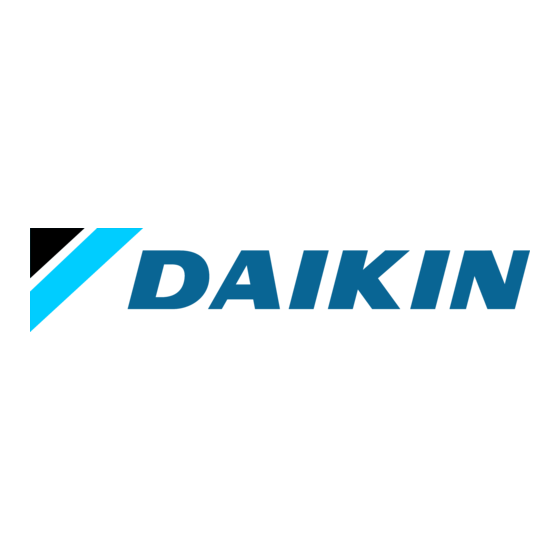
Table of Contents
Advertisement
Quick Links
VRV W T-Series water-cooled system air conditioner
RWEQ96TAYD∗
RWEQ120TAYD∗
RWEQ144TAYD∗
RWEQ192TAYD∗
RWEQ216TAYD∗
RWEQ240TAYD∗
RWEQ264TAYD∗
RWEQ288TAYD∗
RWEQ312TAYD∗
RWEQ336TAYD∗
RWEQ360TAYD∗
RWEQ384TAYD∗
RWEQ408TAYD∗
RWEQ432TAYD∗
Read these instructions carefully before installation.
Keep this manual in a handy place for future reference.
This manual should be left with the equipment owner.
Please visit http://www.daikinac.com/com/resources/manuals for the most current version of installation instructions. In the event of
conflicting information, the online installation instruction is to be used.
Veuillez visiter http://www.daikinac.com/content/resources/manuals pour obtenir la version la plus récente des instructions
d'installation. En cas de conflit d'informations, les instructions d'installation en ligne doivent être utilisées.
Visite http://www.daikinac.com/content/resources/manuals para obtener la versión más actualizada de las instrucciones de
instalación. En caso de información conflictiva, se debe utilizar la instrucción de instalación en línea.
Installation manual
RWEQ96TATJ∗
RWEQ120TATJ∗
RWEQ144TATJ∗
RWEQ192TATJ∗
RWEQ216TATJ∗
RWEQ240TATJ∗
RWEQ264TATJ∗
RWEQ288TATJ∗
RWEQ312TATJ∗
RWEQ336TATJ∗
RWEQ360TATJ∗
RWEQ384TATJ∗
RWEQ408TATJ∗
RWEQ432TATJ∗
VRV W T-Series water-cooled system air conditioner
Climatiseur système refroidi par eau VRV W série T
Sistema de climatización condensado por agua VRV W serie T
Installation manual
Manuel d'installation
Manual de instalación
English
Français
Español
Advertisement
Table of Contents











Need help?
Do you have a question about the RWEQ96TAYD Series and is the answer not in the manual?
Questions and answers